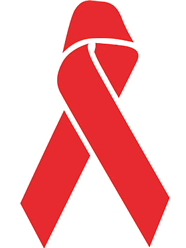First-line
NNRTI and Protease Inhibitor Regimens Work Equally Well for
Children with HIV
 |
 |
 |
 |
| SUMMARY:
Initial antiretroviral therapy
(ART) regimens containing protease inhibitors and
those with non-nucleoside reverse transcriptase
inhibitors (NNRTIs) both produced good outcomes
for children with HIV, according to research published
in the February
1, 2011 advance online edition of Lancet Infectious
Diseases. Viral load dropped by a similar
amount, but children who started on NNRTIs and those
who waited longer to switch were more likely to
develop drug resistance. |
|
 |
 |
 |
 |
By
Liz Highleyman
 Children
infected with HIV at or soon after birth face the prospect
of a lifetime of antiretroviral
treatment, underlining the importance of assessing drug
durability and outcomes over a long follow-up period.
Children
infected with HIV at or soon after birth face the prospect
of a lifetime of antiretroviral
treatment, underlining the importance of assessing drug
durability and outcomes over a long follow-up period.
Investigators with the PENPACT-1 Study Team -- comprised of
investigators with the Paediatric European Network for Treatment
of AIDS (PENTA) and the Pediatric AIDS Clinical Trials Group
(PACTG/IMPAACT) in the U.S. -- assessed long-term outcomes
of first-line ART regimens containing either protease
inhibitors or NNRTIs.
They also looked at viral load criteria for switching to second-line
regimens for children.
This open-label trial included 266 HIV-infected children (median
age 6.5 years) enrolled in Europe and North and South America
between September 2002 and September 2005.
Participants were randomly assigned to receive either a protease
inhibitor or NNRTI, in combination with nucleoside/nucleotide
reverse transcriptase inhibitors (NRTIs). In addition, they
were assigned to switch to a second-line regimen when their
viral load rose to either 1000 or 30,000 copies mL. This design
resulted in 4 arms: PI-low (n = 66), PI-high (n = 65), NNRTI-low
(n = 68), and NNRTI-high (n = 67). Follow-up continued for
a median of 5 years.
Results
 |
188
children (71%) were still on their first-line ART regimen
at the end of the study. |
 |
60
children switched to a second-line regimen during follow-up: |
| |
 |
28
receiving protease inhibitors; |
 |
32
receiving NNRTIs; |
 |
37
switching at the 1000 copies/mL threshold; |
 |
23
switching at the 30,000 copies/mL threshold. |
|
 |
At
4 years, average reductions in HIV viral load were 3.16
log copies/mL for protease inhibitor recipients vs 3.31
log copies/mL for NNRTI recipients, not a significant
difference (P = 0.26). |
 |
HIV
RNA reductions were 3.26 log copies/mL for those who switched
at the 1000 copies/mL threshold vs 3.20 log/copies/mL
for those who switched at the 30,000 copies/mL level,
again not significantly different (P = 0.56). |
 |
Protease
inhibitor resistance was uncommon, and there was no increase
in NRTI resistance in the high vs low switch threshold
group. |
 |
NNRTI
resistance emerged early, and about 10% more children
developed NRTI resistance mutations in the high compared
with low switch threshold group. |
 |
9
children developed new CDC stage C or AIDS-defining conditions. |
 |
60
children experienced grade 3/4 (severe or life-threatening)
adverse events, which occurred with similar frequency
in all arms. |
"Good
long-term outcomes were achieved with all treatments strategies,"
the investigators concluded. "Delayed switching of protease-inhibitor-based
ART might be reasonable where future drug options are limited,
because the risk of selecting for NRTI and protease-inhibitor
resistance is low."
In an accompanying editorial, Catherine Sutcliffe and William
Moss from Johns Hopkins University said these findings supports
the current recommendation to start treatment with a NNRTI
and switch to more a durable protease inhibitor later, but
such a change should be made without delay when viral load
starts to rise, in order to prevent resistance.
2/18/11
References
A
Babiker and others, PENPACT-1 Study Team. First-line antiretroviral
therapy with a protease inhibitor versus non-nucleoside reverse
transcriptase inhibitor and switch at higher versus low viral
load in HIV-infected children: an open-label, randomised phase
2/3 trial. Lancet Infectious Diseases (abstract).
February 1, 2011 (Epub ahead of print).
C Sutcliffe and W Moss. ART for children: what to start and
when to switch (Editorial). Lancet Infectious Diseases.
February 1, 2011 (Epub ahead of print).
